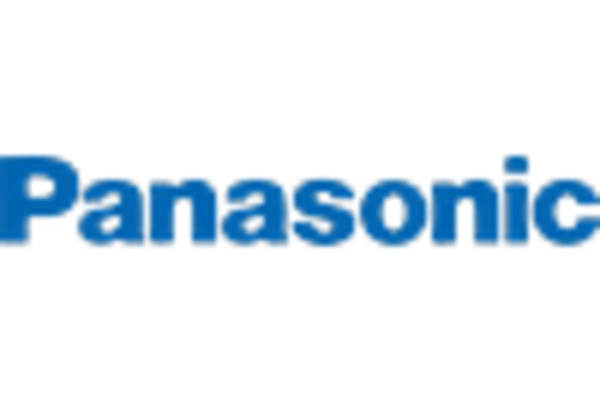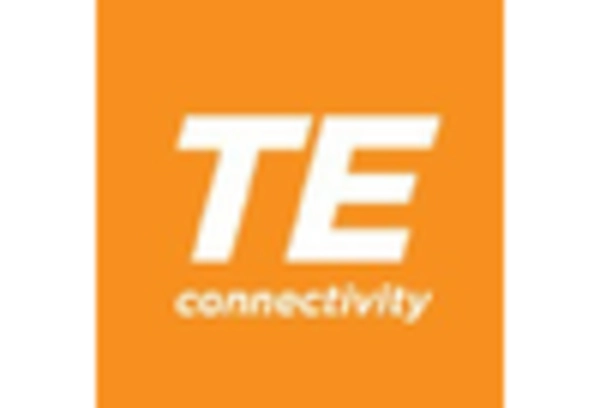Industrial Automation Trends
The Wire Wound Variable Resistor Market is benefiting from the ongoing trends in industrial automation. As industries adopt smart manufacturing practices, the need for precise control systems becomes increasingly critical. Wire wound variable resistors are integral to various automation applications, including robotics and process control systems. The market is expected to grow by approximately 5.5% in 2025, reflecting the rising investments in automation technologies. This growth suggests that manufacturers are prioritizing the integration of reliable components that can enhance operational efficiency and reduce downtime, thereby solidifying the role of wire wound variable resistors in modern industrial applications.
Rising Demand in Electronics
The Wire Wound Variable Resistor Market experiences a notable surge in demand driven by the increasing proliferation of electronic devices. As consumer electronics, automotive applications, and industrial machinery continue to evolve, the need for precise control of electrical currents becomes paramount. In 2025, the market is projected to witness a growth rate of approximately 5.2%, reflecting the industry's responsiveness to technological advancements. This growth is largely attributed to the integration of wire wound variable resistors in various applications, including power supplies and audio equipment, where reliability and performance are critical. Consequently, manufacturers are focusing on enhancing product features to meet the evolving requirements of the electronics sector.
Automotive Industry Innovations
The Wire Wound Variable Resistor Market is poised for growth due to innovations within the automotive sector. With the rise of electric vehicles (EVs) and advanced driver-assistance systems (ADAS), the demand for high-performance components is escalating. Wire wound variable resistors are essential in managing electrical loads and ensuring optimal performance in these advanced systems. The automotive industry is projected to contribute significantly to the market, with an anticipated growth rate of 6.1% in 2025. This growth is indicative of the increasing complexity of automotive electronics, where precision and reliability are non-negotiable, thus driving the demand for wire wound variable resistors.
Growth in Renewable Energy Sector
The Wire Wound Variable Resistor Market is significantly influenced by the expansion of the renewable energy sector. As nations increasingly invest in sustainable energy solutions, the demand for efficient power management systems rises. Wire wound variable resistors play a crucial role in optimizing the performance of renewable energy systems, such as solar inverters and wind turbines. In 2025, the market is expected to grow by around 4.8%, driven by the need for reliable components that can withstand varying environmental conditions. This trend indicates a shift towards more sustainable practices, where wire wound variable resistors are integral to enhancing energy efficiency and reliability in renewable applications.
Emerging Applications in Medical Devices
The Wire Wound Variable Resistor Market is witnessing emerging applications within the medical device sector. As healthcare technology advances, the demand for precise and reliable components in medical equipment is increasing. Wire wound variable resistors are utilized in various medical devices, including diagnostic equipment and monitoring systems, where accuracy is paramount. The market is projected to grow by around 4.5% in 2025, driven by the need for high-quality components that can ensure patient safety and device reliability. This trend indicates a broader acceptance of wire wound variable resistors in critical applications, highlighting their importance in the evolving landscape of medical technology.

















Leave a Comment